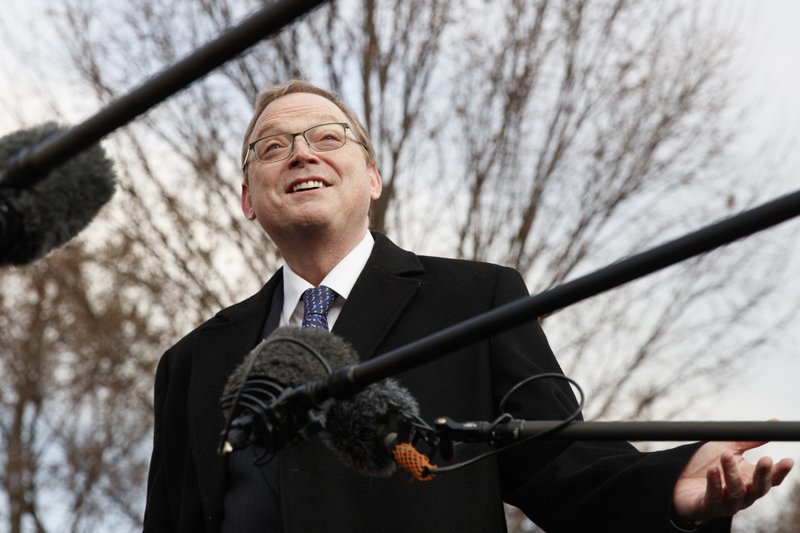Contrary to the views of most economists, President Donald Trump's administration expects the U.S. economy to keep booming over the next decade on the strength of further tax cuts, reduced regulation and improvements to the nation's infrastructure.
The annual report from Trump's Council of Economic Advisers forecasts that the economy will expand a brisk 3.2 percent this year and a still-healthy 2.8 percent a decade from now. That is much faster than the Federal Reserve's long-run forecast of 1.9 percent annual economic growth.
The administration's forecast hinges on an expectation that it will manage to implement further tax cuts, incentives for infrastructure improvements, new labor policies and scaled-back regulations -- programs that are unlikely to gain favor with the Democratic-led House that would need to approve most of them.
Kevin Hassett, chairman of the White House council, insisted that the president's economic agenda would provide enough fuel to drive robust growth at a time when the majority of economists foresee a slowdown partly because the U.S. population is aging.
"The state of the economy is strong," he said on Bloomberg Television, before adding that "data for the first quarter is looking pretty weak."
According to the Federal Reserve Bank of Atlanta's GDPNow tracking forecast, the economy will expand at just a 0.4 percent annual rate in the three months through March.
Hassett said the biggest risk to growth would be if financial markets anticipate that Trump's existing policies would be reversed. Without getting into specifics, he said the risk would be if markets expect that the winner of the 2020 presidential election would shift away from policies such as the tax overhaul that Trump signed into law in 2017.
"Uncertainty over the policies themselves could slow their positive impact," Hassett said.
The tax cuts added roughly $1.5 trillion to the federal debt over the next decade, not accounting for economic growth. The report suggests that the lower tax rates have increased business investment in ways that will make the economy more productive, while also creating a surge in people coming off the sidelines to search for work.
The administration's optimism comes as signs of global economic growth slow, as well as a recent slowdown in manufacturing production and weakness in retail sales in January and December.
Hassett blamed the soft start of the year to "residual seasonality," a data phenomenon typically associated with weakness in first-quarter gross domestic product.
"The quarter keeps being weak year after year after year. I think a typical first quarter now is 1 percent and a typical second quarter is about 3 percent, and we're looking for that pattern to be in the data as well," Hassett said.
This is "something that economists call residual seasonality and, oh gosh, a hundred people just turned the TV off" because the interview entered into wonkish territory, he joked.
Information for this article was contributed by Josh Boak of The Associated Press and by Randall Woods of Bloomberg News.
Business on 03/20/2019
